2000.05.02
innuendo
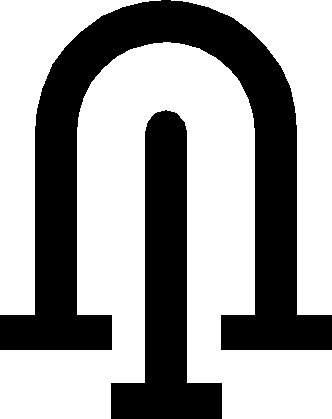
...the solid/void issue, which leads directly to the intercourse building and its acute reenactment of outside/inside, figure/ground, penis/vagina, male/female, Mars/Rhea Silvia.

...the tiny intercourse building opens up a huge potential source regarding the planimetric symbolism of the multitudinous [other] building plans.
Is this where the divine rape of a Vestal Virgin occurred?
| |
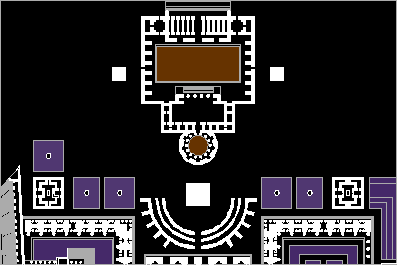 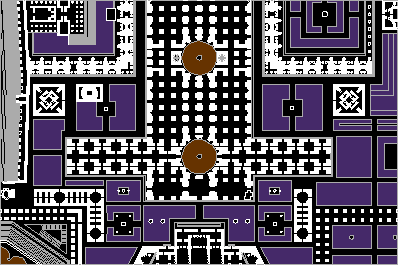 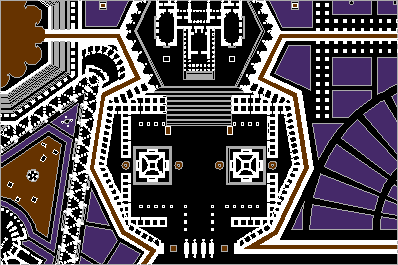 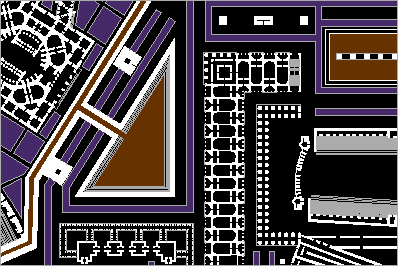 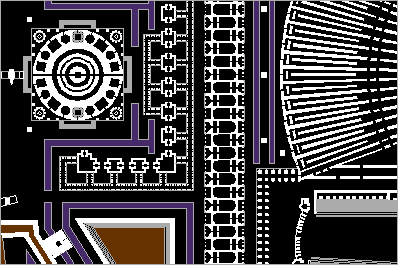 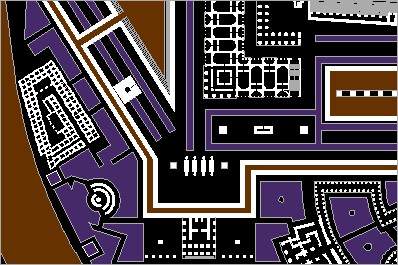 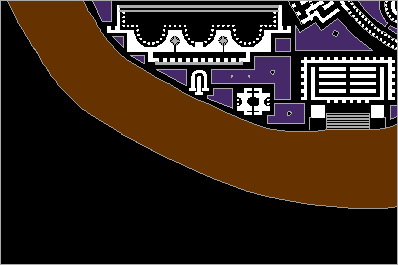
| |
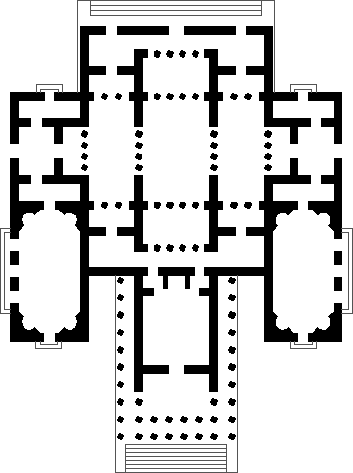
The plan of the [Martian] temple self-evidently represents a penis and two testicles -- a fitting evocation of the male god of war.
...back to Daddy's balls, architecture halls.
| |
2000.05.02 11:11
inquiry
Jeffery:
Thanks for kukos, and I'm glad my Piranesi is work generating some 'archeological' interest. What I've found is that Piranesi, by drawing the Ichnographia, is playing a very clever 'archeological' game whereby his mistakes, ie, misplacement/conjecture of buildings, actually represent an inverted meaning, specifically a Pagan versus Christian inversion--see wqc/density for a paper I delivered in Belgium Nov. 1999 on Piranesi's inversions within the Campo Marzio. For example, Piranesi's placement of the beginning of the Triumphal Way within the Vatican valley represents the fact that the Triumphal Way of post-Constantine Rome ended in the Vatican Valley, namely at St. Peter's Basilica, as opposed to ending at the Arx. [I'm now very curious about the Livy/Jupiter Ferretrius story you mentioned; I don't know this story so could you provide a reference?] Piranesi positions the Porta Triumphalis adjacent the Foro Holitorium, yet he does not delineate an opening in the Servian Wall. I suspect Piranesi, in 1761, was already aware of the gate's ambiguous presence.
The Catalogo is indeed a tremendous bibliographical reference. It made me realize just how much of ancient Rome's architecture is known only via textual (written) reference, as opposed to existing remains. Here's what the Catalogo says about the Triumph:
Ponte Trionfale, o sia Vaticano, Alcuni suppongono, che le rovine, che rimangono nel letto del Tevere incontro lo spedale si S. Spirito in Sassia, Tav. 3 num 39, appartenessero al ponte trionfale. Per vedere di che qualita elle siano, veggasi la Tav. XIV, fig II e III. Si paragoni colle rovine presso il Teatro di Tordinona, che noi crediamo esser di questo ponte, Tav III, num 36, e si dimostrano in prospettiva nella stressa Tav. XIV, alla fig. I, e si riconoscera, che quelle che rimangono presso lo spedale sono affatto diverse dalle maniere dei ponti. Di piu la stessa loro costruttura ben dimostra, che non sono opera antica, ma de' tempi bassi, la quale da cima a fonda e della medesima forma e figura, come abbiam riconosciuto col tastar colle pertiche la profundita di tali rovine: il che abbiamo dimostrato nella stessa Tav. xiv, figura 2 e 3
Porta Trionfale <> sembrano voler dire ch'ella stesse chiusa, e fosse solita aprirsi ai triunfatori.
Via Trionfale <> Vicolo di Gordiano. << Porfir. nella pist. ult. del lib. 1 d'Oraz.>>
I don't understand Italian, so I can't help you with a translation, however, if you can readily translate these citations, I'd appreciate your sharing them with me.
My background is architecture. I'm licenced in Pennsylvania, however, I am not an academic. My redrawing of Piranesi's Campo Marzio is more a huge hobby, albeit, an extremely fertile hobby -- I've learned more about Ancient Rome's monuments and topography in the last 4 years than I ever imagined. For example, I'm presently putting together a 'thesis' that Flavia Julia Helena Augusta, St. Helena, mother of Constantine I, was the 'architect' of Christianity's early 4th century church building boom. This thesis will develop online at www.quondam.com/helena-augusta over the next year or so.
Keep in touch, I never tire of discussing Piranesi and the Campo Marzio.
Steve
2000.05.12 15:33
inquiry
Jeffery:
Good to hear from you. Thanks for the 'catalogo' translations. I'm only guessing, but the 'spedale' may be a huge 'scoop' taken out of the Vatican bank of the Tiber. This seemingly man-made formation is no longer there today, but is registered in both Piranesi's Ichnographiam and in Nolli's (18th century) map of Rome (on which Piranesi assisted Nolli). Nolli also indicts the remain of a 'triumphal' bridge in conjunction with this 'scoop'.
Interesting about the rare taking of most sacred spoils. It often seems that even though traditions (like the triumph) last a long time, all the subsequent occassions rarely, if ever, match up with the 'original'.
I'm not familiar with any other Plattus texts, however, I do know that he was architecture dean at Yale (at least he was two years). As you probably already know by now, the Plattus Triumph essay has many good bibliographic references.
When you mention the Flavians, I think of Piranesi's Campo Marzio rendition of the Naumachia Domitiani, where the grandstands are designed as a continous ascending spiral--very imaginative.
Glad to hear that you find my Pagan-Christian interpretation of the Ichnographia interesting. It is exactly Piranesi's covert references that has made me very interested in the Pagan-Christian transition within Rome. Like Piranesi, I now see this time as not so marked by clear distinction, but rather an interweaving of the two 'cultures'. I spent all morning at the Library researching the (so-called) Arch of Janus Quadrifrons. I preparing to write a short piece about the 'two-faced' (Pagan/Christian) nature of Constantine, who, by most accounts was ruler when this arch was erected.
Here's something you might help me with: there is a 'regional catalog' of Rome that was compiled c. 305-315 AD. Platner (not Plattus) refers to this as the NOTITIA. Do you know of any English translation of this building list, or of any texts about this list? There is a Arcus Divi Constantini listed in the region where the Janus Quadrifrons is, and thus many historian/archeologists believe the two structures are one and the same. In any case, I find the years given to this late-antiquity list as curious, being as they span both Maxentius's and Constantine's reigns in Rome. Could this list have been started under the reign of one and ended under the reign of the other (like the Basilica Maxentius/Constantine)? I'm even wondering whether this new listing of Rome's buildings was actually initiated by Constantine's mother, Helena, who I believe was an architect in all but name only, and who I also believe began living in Rome very soon after 28 October 312.
Steve
|